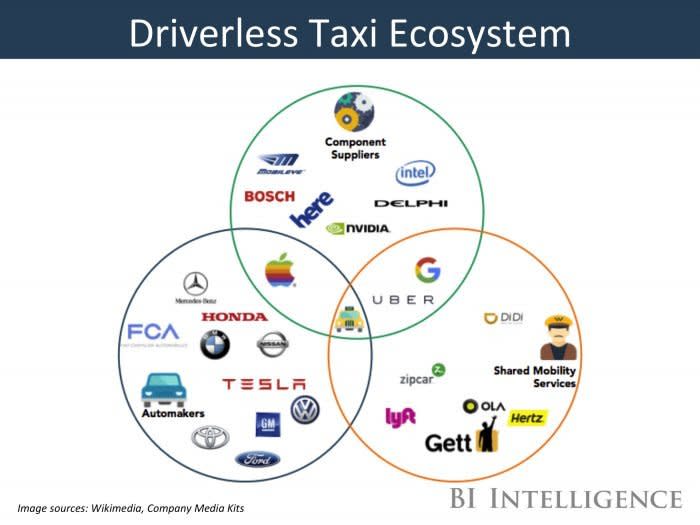One state just decided to tax each ride from Uber, Lyft, and other ride-hailing services

BI Intelligence
This story was delivered to BI Intelligence IoT Briefing subscribers. To learn more and subscribe, please click here.
Massachusetts passed legislation that levies a 20 cent tax on each ride obtained from a ride-hailing service, according to VentureBeat.
The new tax was signed into law as part of new regulations for the ride-hailing industry. Of the 20 cent tax per ride, five cents will go to taxis and 10 cents will go to cities and towns; another five cents will be set aside for the state transportation fund.
This is part of an ongoing fight between traditional taxis and ride-hailing services. The state transportation fund tax will be redirected toward traditional taxi services. Previously, traditional taxi companies had gone after ride-hailing companies that have lower standards for drivers and have put a dent in their profits.
This tax highlights one of the primary problems driverless taxis will face. Taxing ride-hailing companies, in theory, levels the playing field between taxi drivers and ride-hailing drivers. What could throw a major wrench in this would be a transition to driverless taxis, which would eliminate drivers from the equation altogether. If regulators were to tax driverless taxis to make the price even with the driver-operated taxi industry, this would likely raise many questions.
Since the start of 2016, automakers, tech companies, and ride-hailing services have been racing to create a driverless taxi service. This service would mirror how an Uber works today, but there wouldn’t be a driver.
So far, the race has been brutal, as companies jockey for position by spending billions to acquire/invest in companies that will help make a driverless taxi service a reality. Uber recently took the pole position by announcing it would begin piloting its self-driving taxi service (with a driver still behind the wheel) in Pittsburgh later this month. But other companies, including almost every automaker, are quickly catching up as we reach the mid-way point in the driverless taxi race.
For the past two years, BI Intelligence, Business Insider’s premium research service, has been tracking the progress of the self-driving car space. As our reports have shown, the evolution is happening much faster than many expected, but there are still many barriers that have to be overcome before driverless cars become a reality.
John Greenough, senior research analyst for BI Intelligence, has compiled a detailed report on driverless taxis that analyzes the rapidly evolving driverless taxi model and examines the moves companies have made so far in creating a service. In particular, it distills the service into three main players: the automakers who produce the cars, the components suppliers who outfit them to become driverless, and the shared mobility services that provide the platform for consumers to order them.
Here are some of the key takeaways from the report:
Fully autonomous taxis are already here, but to reach the point where companies can remove the driver will take a few years. Both Delphi and nuTonomy have been piloting fully autonomous taxi services in Singapore.
Driverless taxi services would significantly benefit the companies creating them, but could have a massive ripple effect on the overall economy. They could cause lower traffic levels, less pollution, and safer roads. They could also put millions of people who rely on the taxi, as well as the automotive market, out of a job.
We expect the first mass deployment of driverless taxis to happen by 2020. Some government officials have even more aggressive plans to deploy driverless taxis before that, but we believe they will be stymied by technology barriers, including mass infrastructure changes.
But it will take 20-plus years for a driverless taxi service to make a significant dent in the way people travel. We believe the services will be launched in select pockets of the world, but will not reach a global level in the same time-frame that most technology proliferates.
In full the report:
Analyzes the moves 18-plus companies have made in creating a driverless taxi service.
Discusses the corporate and societal benefits of a driverless taxi service
Examines the regulators conundrum when deciding if they should or should not allow driverless taxis to operate
Determines the potential cost of a driverless taxi vs. owning a car, riding in a ride-hailing service, or riding in a taxi
Explains the barriers including the technological and regulatory barriers these companies will face
To get your copy of this invaluable guide, choose one of these options:
Subscribe to an All-Access pass to BI Intelligence and gain immediate access to this report and over 100 other expertly researched reports. As an added bonus, you'll also gain access to all future reports and daily newsletters to ensure you stay ahead of the curve and benefit personally and professionally. >> START A MEMBERSHIP
Purchase & download the full report from our research store. >> BUY THE REPORT
The choice is yours. But however you decide to acquire this report, you’ve given yourself a powerful advantage in your understanding of the future of driverless taxis.
See Also:

 Yahoo News
Yahoo News 

